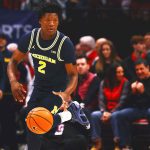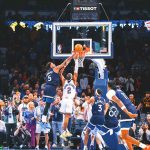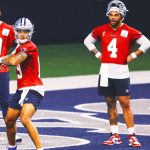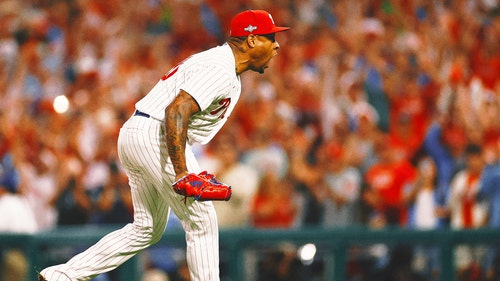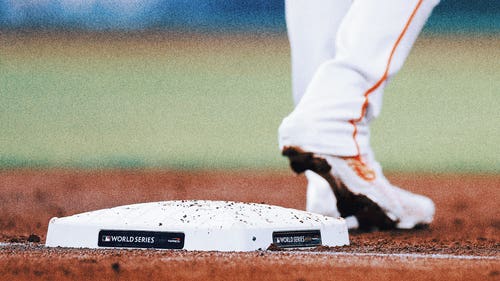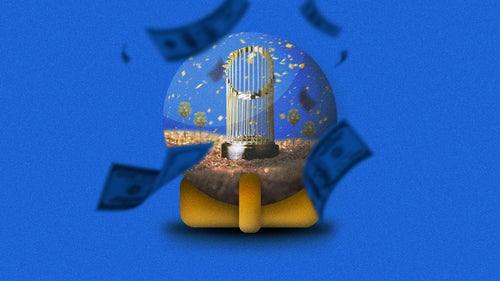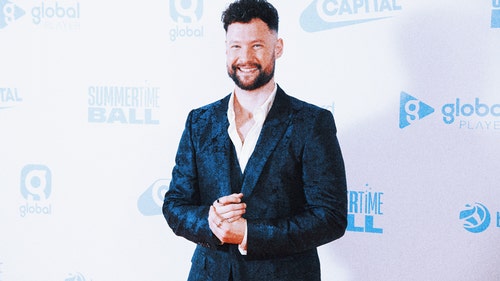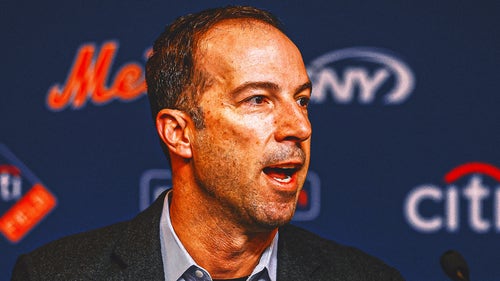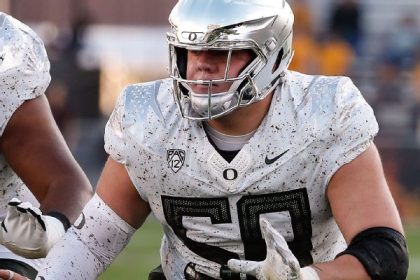Rowan Kavner
MLB Writer
On Oct. 1, 2021, Clayton Kershaw walked off the field at Dodger Stadium for what reasonably could have been the final time.
After missing two months, the future Hall of Famer had done everything in his power to be part of another October run only to feel the pain pulsing through his elbow again. He was wincing and grimacing. The final image of the three-time Cy Young Award winner’s season was a cruel one. Kershaw was still clutching the baseball as he sauntered off the field and into an uncertain future, removed after allowing five hits and three runs in 1.2 innings.
He received a standing ovation from more than 50,000 fans who didn’t know if they had just witnessed him spin his last pitch. It was the final start of his final year under contract. He was 33 years old, injuries mounting. A flexor tendon strain would render him unable to pitch in the postseason and unable to pick up a ball again for three months. He did not want to make a decision on his next move until more time had passed.
A year later, back on the familiar rubber at Dodger Stadium, Kershaw spotted a vaunted slider beneath the swing of Spencer Torkelson, who was 8 years old when Kershaw’s major-league career began. In doing so, he became the Dodgers‘ new strikeout leader.
ADVERTISEMENT
Kershaw has reached the point of his illustrious career where every start takes him further into the record books.
Earlier this year, he won his 200th game, making him the only player in his team’s Los Angeles history to accomplish the feat. He owns a better career winning percentage than any other 200-game winner in baseball’s modern era. On his final home start of the regular season, Kershaw vaulted past Don Drysdale to move into second place in franchise history in wins.
Again, he has done everything in his power to be part of another playoff run in Los Angeles. Again, that meant pitching at less than 100 percent. This time, his perseverance paid off.
After missing more than a month this summer with an unspecified shoulder injury, and spending the second half of the season battling through shortened starts and diminished velocity, Kershaw built himself back up enough to be ready to take the ball for Game 1 of the Dodgers’ National League Division Series matchup Saturday against the Diamondbacks.
“It’s remarkable,” Dodgers manager Dave Roberts said. “It really is. I think that Clayton is the first to tell you he doesn’t like to use anything as an excuse or talk about anything, but I know what’s going on. I just have so much respect for him. People can’t do what he can do.”
Two years ago, his future uncertain, the lockout bought time for Kershaw to make his decision.
He started throwing in January, but he did not know how he’d feel once he did. He did not want to commit to a return if he didn’t think he could help and get through a full season. He did not want to be a hindrance to a team.
He decided, if he were to play, it would only be for the Dodgers or his hometown Texas Rangers. The Dodgers had won the shortened 2020 season, but ultimately, Kershaw still felt there was unfinished business.
By the time the lockout lifted, Kershaw’s decision was made. It’s a choice the 35-year-old will have to consider every offseason now. He has committed to only accepting one-year deals for however long he continues to play, and to only play in Los Angeles or Texas, reassessing after each season what makes the most sense for him and his growing family of four children. He is at peace with that method, even if it means leaving money on the table.
Last offseason was no exception after the Dodgers’ shocking early playoff exit at the hands of the rival Padres, but the decision was easier. He was healthier. The discussion with his wife, Ellen, lasted only a few days before he committed to another competitive Dodgers team in 2023.
The choice was made so that Kershaw could find himself again in moments like he will this Saturday, when he will make his 32nd postseason start in a 16-year career spent entirely with the same franchise. The first game of the Dodgers’ postseason comes with the same undetermined backdrop: that every start at Dodger Stadium could be Kershaw’s last.
“I’ve thought about that for the last few years,” Roberts said. “I will say that I’m not going to get caught not appreciating what he’s done for the Dodgers.”
Kershaw’s teammates won’t, either.
It’s why, amid a champagne celebration after Kershaw’s 200th win in April, Freddie Freeman and Kershaw’s longtime catcher Austin Barnes gave the Dodgers’ all-time leader in wins above replacement a toast to tell him how much he was appreciated.
“Sometimes,” Barnes said afterward, “you gotta let those guys know.”
The Dodgers, after all, don’t know how much longer they’ll get to watch Kershaw pitch. The concept came up again on Sept. 23, in what might have been Kershaw’s final regular-season start of his career at the only major-league ballpark he has called home. In a perfect encapsulation of the 10-time All-Star, he battled with what he had. His fastball never touched 90 mph. The Giants never scored.
Kershaw claimed he wasn’t thinking about the possible finality of it all during the performance, though his wife and kids attended. He waved to them from the dugout after five shutout frames. The Dodgers won, and so did Kershaw — for the 210th time in his career. Only Don Sutton has won more games in a Dodgers uniform.
“Thankfully, we’re in the playoffs,” Kershaw said. “It’s a nice distraction, so you don’t really have to think about next year or anything like that. But whenever it could be your last one, maybe you take a second extra. But I’m so far away from that decision that I don’t even have time to worry about it.”
Unlike two years ago, Kershaw’s attempt to battle back from injury reached its intended mark. He will have a say in the Dodgers’ 2023 postseason success. His presence is especially vital this year for a makeshift Dodgers rotation that can’t turn to Walker Buehler, Julio Urías, Dustin May or Tony Gonsolin.
But he will have to perform in a different manner than he would prefer.
On June 27 in Colorado, Kershaw fired six scoreless innings, allowing just one hit. He missed the next month and a half and was not the same upon his return from the injured list in August. A fastball that sat in the low 90s has dropped a few ticks. After going at least six innings in 12 of 16 starts before the injury, he has gone five or fewer in all eight starts since his return.
He has pitched with at least five days of rest in each of those eight starts. He was given 10 days off after his first start of September, and his past two starts came on six days of rest.
“I’m on the college schedule — I’m the Saturday starter,” Kershaw quipped last month. “We’re doing everything for a reason around here. Take the extra rest when you can get it, try to get right for the playoffs and all that stuff. It’s a different routine, obviously … but where I’m at right now, it makes sense.”
Everything has looked a little different — except for the results.
In those eight starts back, Kershaw has a 2.23 ERA. The slider extraordinaire is tapping into every last morsel he has, even sneaking in an occasional changeup to righties. It hasn’t often looked pretty, but it has worked. He allowed three runs or fewer in each of his previous 13 starts, amassing a 1.69 ERA in that time.
“At the end of the day, you just have to execute pitches,” Kershaw said. “It’s as simple as that.”
Kershaw’s regular season concluded with a 2.46 ERA, a mark even better than his historic career ERA (2.48). He is the only starter in the last 100 years who has thrown at least 1,000 innings with an ERA under 2.50. He has not pitched 150 innings in a season since 2019, limited by back, elbow and shoulder ailments, but he has made each of those innings count. Since 2020, his 2.67 ERA is the third-best mark in the sport.
There were times throughout this year’s second half when Roberts held his breath, uncertain how far Kershaw could continue to push his limits, desperately wanting his left-hander to stay upright and be available when the Dodgers needed him most. He did. And he is.
“I remember there was a start here a few years ago where I think he was throwing 82 miles an hour in a day game where his back went out,” Roberts said. “And he found a way to get three or four innings of zero-hit baseball, or no run, and I don’t know how he was doing it. He ended up going on the IL right after that. He just sort of wills himself to get guys out.”
He will have to continue doing so this October, as the Dodgers rely on Kershaw and a bevy of rookies to carry their rotation.
A four-seamer that registered at 91.2 mph in April was averaging 88.6 mph in September, but Kershaw made it to the playoffs intact. His new regimen helped him to the finish line, and president of baseball operations Andrew Friedman said Thursday that Kershaw believes he has put himself in a good position to pitch on shorter rest than what he grew accustomed to throughout the second half.
“From my standpoint,” Friedman said Wednesday, “Kersh is the greatest competitor I’ve ever seen.”
Whether his fastball registers at 95, 92 or 88, that trait hasn’t changed — however long he continues to do it.
“I’d much rather just be good the whole time and throw as hard as I possibly could,” Kershaw said. “It’s not fun to have to figure stuff out, but adapt or die. You have to.”
Rowan Kavner covers the Dodgers and MLB as a whole for FOX Sports. He previously was the Dodgers’ editor of digital and print publications. Follow him on Twitter at @RowanKavner.
MLB trending
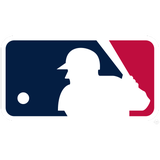
Get more from Major League Baseball Follow your favorites to get information about games, news and more

